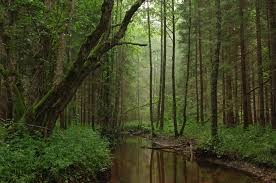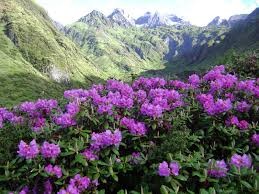Bhutan committed to environmental conservation

Bhutan is one of the smallest countries in the world, but it stands first when it comes to conservation. It is often ignored by the international community because of its tiny size. This small nation lies deep within the Himalayas between China and India, two of the most populated countries in the world. This country’s population is of about 750,000 only, but the people have set some remarkable environmental benchmarks. Bhutan is not only carbon neutral, it is also a carbon basin which makes it one of the few countries in the world to have negative carbon emissions.
During the run-up and first week of the Paris climate talks in November 2015, the biggest greenhouse gas emitters China, United States, European Union, India and Russia were in the center stage. They account for more than half of all global emissions, their carbon commitments need to be closely scrutinized for the cause of wellness of this planet. About 150 countries submitted climate pledges to the United Nations. But, the most interesting nations are countries that are already carbon negative. These national carbon sinks are not pioneer in green energy, nor are their citizens rigorously focused on their ecological footprints. They respect the environment as much as their own lives; they lead lives that are different from most peoples around the world. They treat this planet differently. They nurture it, they respect it. The leading nations in the world could certainly emulate a thing or two from these small nations.
The Himalayan nation, Bhutan emitted just 2.2 million tons of carbon dioxide in 2013 (the last time an inventory was taken). Bhutan is, undeniably, a small country, but that does not mean that their carbon frugality can be undervalued. Luxembourg is also a small nation having small population, it emits more than 10 million tons of CO2 per year.
What makes Bhutan an outstanding example? The majority of Bhutanese work in agriculture and forestry. They prefer living closer to the land. The country relies on hydropower which is by no means a perfect energy source, but at least it does not threaten the future of the nation. This is one of the major factors for their low carbon emission. Bhutan’s hydropower production is so prolific that it exports a significant portion to its neighbor India which is energy hungry. Conservation of the environment is one of the four pillars of Bhutan’s ‘Gross National Happiness’ philosophy. GNP is contrast to GDP. As mandated in its constitution, Bhutan all time preserves 60 percent of its land under forest cover. Bhutan has succeeded in doing this so far. This country is home to the highest percentage, more than 51 percent of protected land in Asia. And, most of it is unharmed forests interwoven with free-flowing rivers!
The country’s vast, largely undisturbed forests absorb far more carbon dioxide than its people produce, yes, they absorb carbon dioxide emitted by the neighboring countries. Occupying more than eight million acres, Bhutan’s trees could possibly absorb more than six million tons of carbon dioxide. Though, this could be a rough approximation, it is difficult to calculate with precision the CO2 absorption rate for a forest. The fact remains that Bhutan’s jungles absorb the many neighboring country’s carbon dioxide emissions.
It is not that everything is hunky-dory in Bhutan. Like every country has its plus and minus, this country too has its share. The Government of Bhutan has been a constitutional monarchy since July 2008. Its monarchy has made some big mistakes on human rights, like amending its citizenship laws and leaving 100,000 Bhutanese people of Nepalese origin stateless. It also ranks in the bottom quartile of countries by GDP per capita. But by and large, Bhutanese don’t seem to think they are suffering. People are not money ambitious. The country assesses its progress not by gross national product but by “Gross National Happiness”. The terminology is printed on the cover of a self-help leaflet, which means it is not a crazy idea. The government takes data on measures such as health, education, and ecological diversity and flexibility and combines the statistics to measure the country’s overall well-being. This approach has produced dividends for Bhutan’s environment. It’s in stark contrast to other nations that have constitutional provisions protecting gun ownership but not the planet. Bhutan has also committed to leaving 60 percent of its land forested and has banned logging exports.
Evidence of this commitment to conservation is everywhere in Bhutan. Native wildlife which includes endangered royal Bengal tigers, elusive snow leopards, elegant black cranes and elephants all roam freely in the country’s 5 million acre network of protected areas. The motto of people of this Buddhist kingdom holds on to a fundamental birthright of living out life in a healthy environment. And the rest of the world benefits, too. Bhutan is in a region that provides water for one-fifth of the world’s population. Bhutan also is at the heart of the Eastern Himalayas, which is one of the world’s 10-most biodiverse regions.
Lessons to learn from Bhutan
In the words of Mr. Dechen Dorji Bhutan’s representative to World Wildlife Fund (WWF) “We need to balance the need for economic development – like hydropower and tourism – with the need to protect natural resources. We need to balance jobs in the cities with jobs in rural villages. And we need to balance tradition and age-old religious beliefs with the desires for modern amenities.”
The World Bank is all praises for Bhutan’s guiding development philosophy – gross national happiness (GNH). The top officials of World Bank say that it is high time that other countries should emulate Bhutan’s practices of balancing growth and sustainable development. They say that Bhutan can play a critical role in showing the world how to respond to climate change. The way this country is using its forestry is amazing. In fact it is creating opportunities in the private sector for new businesses connected with environment conservation.
“The government can’t absorb people coming out of universities and high schools. It has got to be the private sector and you’ve got to create the opportunity through removing regulations. That makes it easy for people to set up businesses,” World Bank official says.
Can Bhutan disallow industrialization?
There is a worry, can Bhutan take mores stricture measures to disallow industrialization? Its natural resources are on the brink of being more threatened now than ever before, despite the governments political will and conservation milestones. The country has changed more in the last 50 years than the past 500 years combined. Rapid modernization, the adoption of democracy, and a dramatic shift in demographics have all contributed to in the country’s transition. Today, 60 percent of the country’s population is below the age of 34. As new industries are created for growth, somewhere the environment seems to be taking a backseat. If the country does not address the challenges now, it risks losing everything it has worked so hard to protect. Rest of the world needs to emulate this country’s model; I wish the Government of Bhutan sticks to its “gross national happiness” philosophy.















































